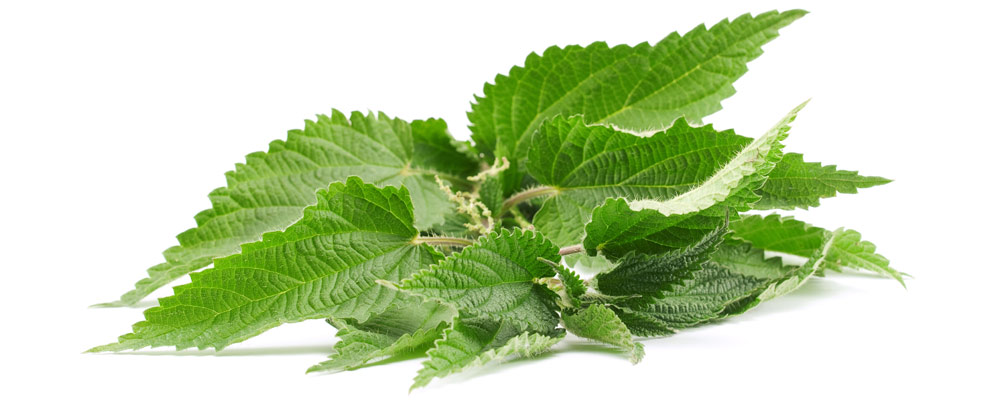Nettle
Nettles, often considered weeds and discredited as unpleasant, invasive, stinging plants, have long since been renowned as a source of vitamin C, proteins and minerals. Nettle leaves also serve as a preservative in cheese making and their high levels of chlorophyll make them an ideal food colouring. Fermented, they provide a natural fertiliser.
A plant with an undeserved reputation
Stinging nettles and other wild plants have been consumed across the ages, from the first hunter-gatherers to the present day. The plant is used in a variety of ways: While nettle fibres have been used to weave string and rope since Neolithic times, from Antiquity onward, medicine recommended the use of nettle leaves and juice to stop bleeding. On the American continent, natives cooked and ate nettles in spring, as a means of surviving when food was scarce. In the United Kingdom, cheesemakers use them as a natural preservative. Cornish Yarg cheese, for which the earliest recipe dates back to the 13th century, is still made today and is wrapped in nettle leaves before being left to mature.
Nowadays, thanks to the recognised nutritional qualities of nettles, they are gradually becoming integrated into our diet. Richer in vitamin C than an orange, nettles are also an important source of iron, calcium, magnesium and protein, much more than soya beans, making it an interesting addition to diets containing little or no meat and/or dairy products, such as vegetarian and vegan diets.
Soup and liquid manure
Nettles are easily found and can be harvested all year round, as and when needed. The fact that they sting means certain precautions should be taken when picking them, such as wearing gloves to avoid skin irritations, and soaking the leaves before eating them so they lose their sting. The leaves can be cooked in a soup or eaten raw, in a salad. The high levels of chlorophyll in nettles means they can also be used as a natural food colouring.
Nettles can also be given to farm animals as a food supplement or harvested to be turned into a natural fertiliser. Fermented extract of nettles deters pests, is rich in nutrients and stimulates plant immunity.
Urtica dioica and Urtica urens
In Europe, Urtica doica flourishes as a perennial plant reaching up to three metres in height, while Urtuca urens is an annual plant, growing up to 60 cm tall. As a rhizomatous plant, propagating asexually, these nettles adapt easily to various types of natural spaces and often grow on undeveloped and waste land with high amounts of azote. This particularity has led nettles to be seen as weeds. A fast-growing, single network of rhizomes gives rise to several stems each with leaves at regular intervals. During the flowering period, from June to September, nettles are covered with small white flowers.
Nettles belong to the Urticaceae family and have a dark green stem and oval, pointed and serrated leaves. They are completely covered in small hairs (tubes reinforced with silicic acid) containing a toxic liquid, to deter natural predators. When these hairs come into contact with skin, they release a cocktail comprised mainly of histamine and formic acid, thus causing a burning sensation.
Click here to add nettles to your Potionarium
AUBURN, René, MAGNAN Didier, 2008. Cultivez les plantes sauvages et comestibles, Paris : Editions Artemis.
ISBN 9782844166586
COUPLAN, François, 2009. Le régal végétal : plantes sauvages comestibles, Editions Ellebore.
ISBN 9782869851849
MACHON, Nathalier, MACHON, Danielle, 2015. À la cueillette des plantes sauvages utiles : plantes médicinales, tincturiales, aromatiques … sachez les reconnaître (2e éd.), Editions Dunod.
ISBN 9782100724451.
MAGNAN, Didier, 1989. Les Plantes comestibles: cueillette-culture-cuisine: guide pratique, Collection Nature, Editions du Rocher.
ISBN 9782268007656.
MARTIN, Lucie, 2014. Premiers paysans des Alpes : alimentation végétale et agriculture au Néolithique, Rennes : Presses universitaires de Rennes.
ETIENNE, Jean, 2007, Ötzi, l'homme des glaces, est mort assassiné, Futura-Sciences, http://www.futura-sciences.com/magazines/terre/infos/actu/d/paleontologie-otzi-homme-glaces-mort-assassine-12097/
ARTE, 2010. L’Ortie, vers un jardin sauvage. Le secret des plantes. http://www.dailymotion.com/video/xod5z8_l-ortie-vers-un-jardin-sauvage-secrets-de-plantes-documentaire_tech (consulté 21.02.2016).
Lynher Dairies Ltd, Nettle wrapped Cornish Yarg, https://www.lynherdairies.co.uk/cornish-yarg/ (consulté 25.08.2016)








